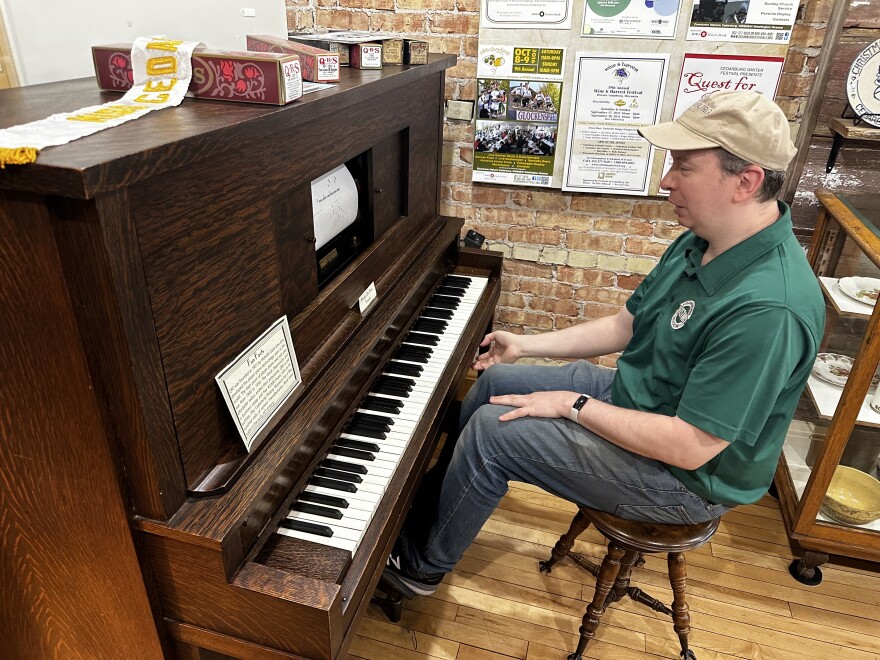Bubbler Talk listener Susan Armour Seidman remembers visiting the Chudnow Museum of Yesteryear in Milwaukee before it was closed. She even donated her father’s World War II uniform to its collection.
Since the museum closed, she’s wanted to know: "What happened to the Museum of Yesteryear that was in an old house downtown, and what happened to its collection?"
The Chudnow Museum was located at North 11th Street, across from the Milwaukee County Courthouse for eight years. Its doors permanently closed in 2021 due to the pandemic. The collection mainly features items from the early 1900s, which were arranged to recreate shops from the era like an apothecary, barbershop and shoe and grocery stores.
Now, the museum’s 150,000 artifacts are located at the Cedarburg History Museum. In Cedarburg, Daniel Chudnow explains that his father Avrum Chudnow, also called Abe, started the collection. Abe was born in 1913. Daniel says his grandfather emigrated from Ukraine to Milwaukee and was a peddler for many years.

"It was his dream to open up a scrapyard," he says of his grandfather. "He and his sons opened up the Chudnow Iron and Metal, which was on 54th and State. It’s now closed but it was a scrapyard for many years. I think my dad probably got the bug of collecting from him."
Abe displayed his collection in the basement of his Fox Point home. When the collection outgrew the space, he moved it to his Milwaukee office. After Abe died in 2005, the Chudnows made it a museum.
Back at Cedarburg, surrounded by grocery items like decades-old Wheaties boxes and five-cent Milk Duds, Museum Director Joel Willems guides us to a World War II display that might contain the uniform donated by Bubbler Talk listener, Seidman. But she can’t recall if the jacket on display is the one she brought in nearly a decade ago. Seidman shares the significance of her father’s military service.
"My dad enlisted and was originally in the last regiment of the horse cavalry," Seidman says. "People don’t realize that there was still a horse cavalry at the beginning of World War II. Then he became a member of the Army Air Corps. He was a cartographer. He drew maps from airplanes over France and he was also a navigator."

Near the display, a self-playing piano is equipped with a paper roll containing music for “When Johnny Comes Marching Home.” Museum Director Willems says it’s just one of the many attractions that visitors enjoy at the museum. Next, he leads us to a scale from 1910 that reads in painted blue letters, “your correct weight – one cent.” Before Willems worked in Cedarburg, he was the Chudnow Museum’s curator in Milwaukee.
"Mr. Chudnow told me himself that this came from the scrapyard," says Willems. "Somebody was going to melt this down and he had it repainted once by some of the people that helped him out with his collection. We’ve never done anything different with it except for taking off the back so that we can access the money that just gets kind of rotated in there. One penny in, one penny out."
Willems approaches a crank phone hanging on the wall.
"We eventually had three of them working that way," he says. "It was a lot of fun for the kids to come in and listen 'Oh you’re upstairs; I’m over down here.' They would make up entire fun conversations, 'Can you order this; can you get that for me?'"
He hopes to make the phones work again just like they did at the museum in Milwaukee. For the adults that remember the Chudnow Museum, Willems explains the iconic display that guests want to see return.
"I should mention the speakeasy that was through the barbershop," says Willems. "I still get many people come up to Cedarburg like, 'Where’s that — I need to see that one.' We’ll probably bring it back at some time."
Standing among the thousands of items that Abe collected, Daniel says it was his father’s dream to share the history of his collection with others.
_








